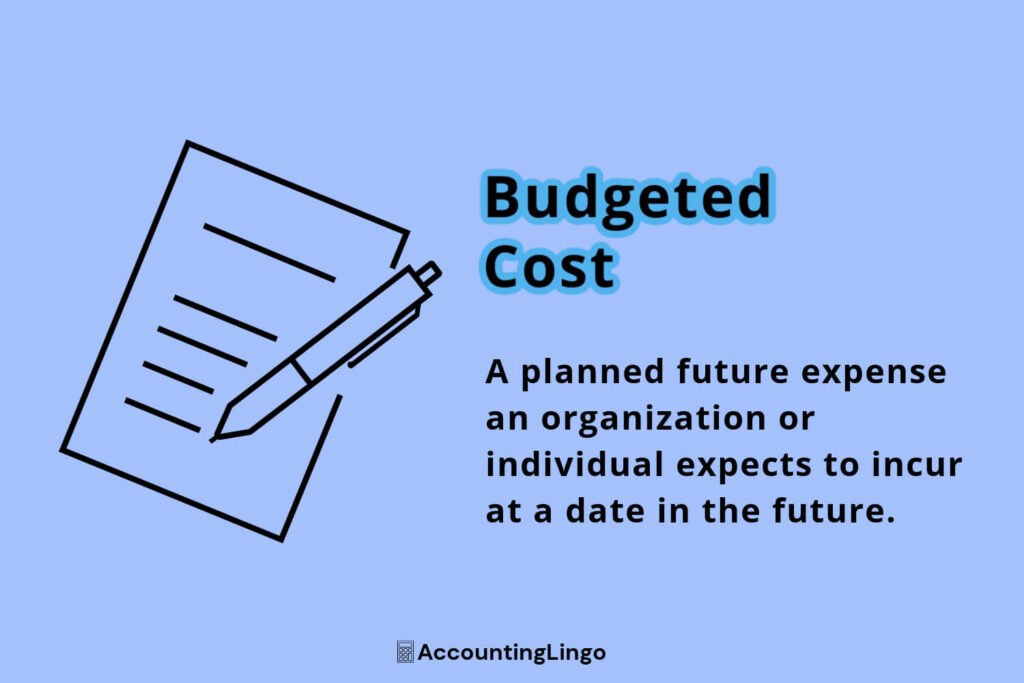
What is Budgeted Cost?
Budgeted cost is a planned future expense an organization or individual expects to incur at a date in the future.
“Budgeted represents resources that are managed.” -University of California
Understanding Budgeted Cost
Budgeted cost identifies expected future expenses commonly derived from past expense history. Companies also utilize historical revenue and sales data during the budget creation process. Management expects certain liabilities to perpetually exist when a business continues to operate. Therefore, fixed costs such as salary, rent, and utilities are common budgeted cost entries.
Increases or decreases in budgeted cost amounts result for a variety of reasons such as:
- Salary cost fluctuations due to increases or decreases in headcount.
- Rent cost changes due to needing more or less commercial space.
- Material cost variations due to changing raw material needs.
Management can plan for expected increases/decreases in costs by forecasting future expenditures. Expecting a doubling of sales revenue would likely require expansion of an existing facility as well as higher labor and materials cost. A reduction in sales revenue would more so require a reduction in facility space along with a reduction in labor and material needs. Forecasting future business changes and reflecting upon the past aids management in the budget creation process.
Budgeted Cost Estimate
Most budgets begin with the current year’s estimates and are then adapted to reflect recent trends and future projections. Creating a budgeted cost document requires information in two key areas.
Future Revenue
Future sales expectations allow a company to plan from an operational standpoint. These forecasts assist management when planning basic day to day needs such as:
- Material
- Labor
- Facilities
Future Expenses
With revenue expectations in place a company can then outline expected future expenses. This expense type is generally a result of sales-related activities. Material, labor, facilities, etc. commonly paid from floating capital require liquidity on a continual basis in support of generating sales revenues.
Comparing Actual vs. Budgeted vs. Standard Costs
Actual costs are the true amount a company pays in total expenses over a given period. Actual cost is utilized during the creation of a company’s financial statements.
Budgeted costs are a forecast of expectations commonly based upon the history of past expenses. What a company expects to pay in the future can closely mirror the historical past.
Standard costs are commonly used in manufacturing and are often predetermined in advance such as:
- Direct labor: standard cost per hour
- Direct materials: standard cost per unit
Example of Budgeted Cost vs. Actual Cost
Angela owns 4 coffee shops in her hometown with 8 full time employees and 7 part time employees. She utilizes a spreadsheet to keep track of her annual budgeted costs. At the beginning of the year, she has a clear picture as to expected annual wage-related expenses for her 15 employees (budgeted costs of $375,000).
Halfway through the year, 3 of Angela’s employees quit and 2 go out on maternity leave. It took approximately 1-2 months to hire each replacement. Her actual wage-related expenses decreased for the year due to these unexpected circumstances (actual costs $325,000 vs budgeted cost of $375,000). This doesn’t consider any sales-related losses due to having less employees during that period.
Additional Resources
For similar budget and costing concepts, see:
Merchandise Purchases Budget: What Is It?
Overcome Budgeting Challenges
What is Step Variable Cost?
